#monastic tradition
Explore tagged Tumblr posts
Text

Monk: Way of the Draconic Flesh
"Often looked down by other monastic traditions; for it is said that their ways desecrate the divine body."
A joke doodle, turned practice, turned idea for a DND5e monk subclass 😅
17 notes
·
View notes
Text
There’s no running away from your problems at monasteries. It’s the best + most awful thing
#I’m learning some things are monastery-specific and not tradition-specific#like very strong gender norms are just universal in Asian monastic cultures. things will always be uphill for me bc I’m a woman#I’m working a lot harder than the guys and I have more baggage than the guys too#not to assume but. the men are telling me I have it pretty bad.#my work-study coordinator is meeting with me because he sees how overworked I am. he emailed me saying he’s worried for my well-being#I think it’s just a lot when I’m also in the midst of healing from traumatic grief. the classes are making me cry and shit hahaha fuck#I’m hanging in there but I’d be lying if I said it wasn’t hard as hell being here. for so so many reasons
2 notes
·
View notes
Text
Like surely someone has told Melvyn Bragg about the 'dawn raid' Aelred's great-grandfather is reputed to have made on Jarrow to steal the Venerable Bede's bones. SURELY
#Me being escorted out of the BBC's building like 'YOU DON'T UNDERSTAND HE'S A LIVING IN OUR TIME EPISODE'#Stands at the junction of the older English tradition of hereditary priests and the new reformed monastic orders and everythign#Central to discussions of the meaning of friendship in the Middle Ages that have been popular over the last few decades#Probably corresponded with Bernard of Clairvaux#Gave us the classic image of David I#What more do you want#... I should perhaps mention that I am running a fever right now and also have been stuck in the house all day because possibly contagious#So my priorities may be somewhat skewed
4 notes
·
View notes
Text

durge coming out of the box looking like a murder hobo who tried to copy her sister's hairstyle
2 notes
·
View notes
Text
Monastic Traditions by Laser Llama
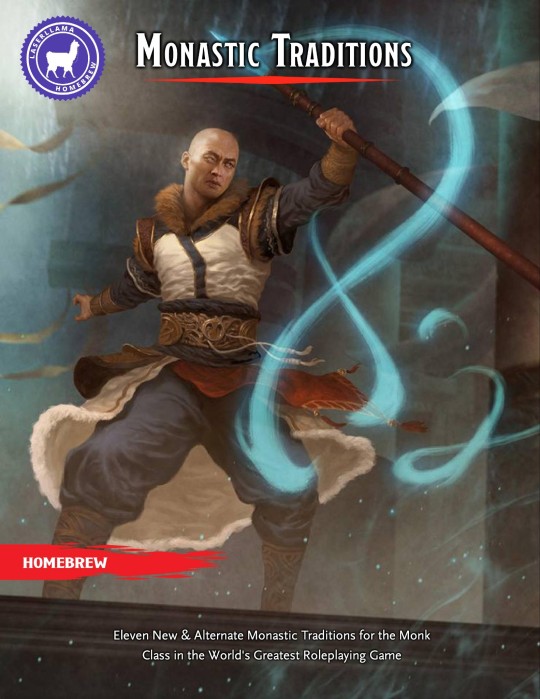




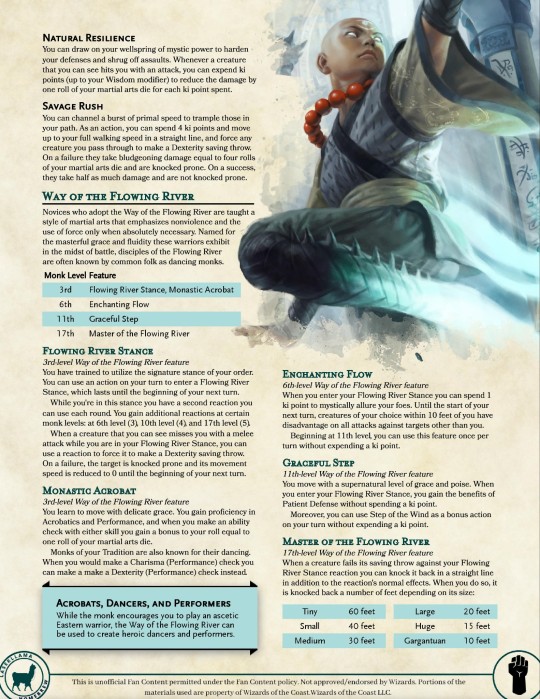


#laser llama#monastic#traditions#monkish#monks#monk#class#classes#expanded#expansion#revised#revisions#elemental#elements#updated
3 notes
·
View notes
Text

Find it in r/AvatarMemes, posted by u/HAZMAT_Eater.
When it autocorrects with "The Legend of Koran"... (HAZMAT_Eater)
Ok, now I could be a bit interested to watch LoK!
So, the Avatar would be the Incarnation of Brahman, the First Speaking of Al-Aql, the Active Intellect Over the Reality, and Raava and Vaatu are comrades and traitors of Brahman, cause they desrespected its view about Humanity as Only Keepers of Material World. So the story could follow part of Bryke's retcons of AtlA's lore, but Raava would be one of the villain and protector of Zaheer and Kuvira. Ah, in this AU there isn't Korrasami, but Korra would become a lone celibe Who follows the Search of True Path, as a Real Monk similar to Saint Symeon the Stylite, Ra'bia Al-Adawiyya or Siddharta Gautama.
And clearly, the Air Nomads would return before Korra and without that "spiritual crap", and they would have a morr interesting and complex history, with Four Different Historical Monastic Traditions: the Yellow Monks in the North, the Buddhist-like, becoming the Only Traditions under Avatar Szeto and without approvation of Yangchen; the Red Monks, a fusion between tibetan red lama and jainist monks, in the West; the Black Monks, inspired by Syriac Diaphisite Christian Monasticism in India, Turks countries and China too (Historically repressed by Imperial Chinese Authorities before Mongol Invasion); and White Monks, the Sufi-like, in the East.
And the Air Nomads would be a fusion among indo-aryans people and turk people, nomadic and warrior, that slowly in the time would had became more attract to spirituality and they would had divided in Two Hordes with two different interpretations of World and Avatar too.
Yes, I created a lore and an AU from a meme!
#atla#avatar the last airbender#avatar the legend of aang#atla memes#atla meme#muslim meme#religious memes#islamic memes#raava and vaatu suck#au atla#atla au#atla air nomads#air nomads#air monks#atla monks#monastic different traditions#monasticism#sufism
0 notes
Text
y'all ever heard of leprosy. That shits crazy fr.
#archeology#many burials of lepers particularly in england seem to have been done in accordance with monastic traditions as if the afflicted were holy
0 notes
Text
in this context it meant
a) everything written was in the same language that the characters spoke, with no mention of any of it being in latin or a more formal register, and
b) they wrote letters in casual spoken language with no formal structures or greetings or anything to acknowledge that this was a different form of communication and not, like, an email, despite those letters being written on parchment and sent between noble families via messenger
(because those letters were all assumed to be private, ephemeral, and to be read silently by the recipient only, like a modern letter or email, and not an expensive endeavour that would likely be read aloud in the presence of others and thus should probably involve some polite and formulaic greetings at the very least)
it's not that nobody wrote simplistic notes to each in the vernacular, of course, but they probably wouldn't be doing it on parchment, bc that's expensive. if it's not intended to be a formal lasting record -- and therefore requiring formal language -- it would make a lot more sense to write those kinds of notes on a wax tablet or similar; then the recipient can melt it and write a reply and send the tablet back and you haven't had to murder a sheep for it
even leaving the materials aside, written language has mostly been a fair degree more formal than spoken language which is why language change in written records typically lags behind what people were actually saying. i'd say it's fairly recent that people started writing exactly as they speak, so writing a letter in the exact same colloquial register as the rest of the dialogue was sufficiently aggravating to warrant a spot on the bingo chart

okay what did i miss
(yes some of these overlap and some are suppositions. for example if parchment is always used for ephemera, rough drafts, notes, and never re-used or re-purposed, we can also assume that the author is unaware of wax tablets as a concept)
#also typically in societies where literacy is limited to an elite#you DON'T get a large amount of vernacular writing because education is not in the vernacular#hence why you get a separation of vernacular oral traditions and latin written traditions until like the twelfth century in france etc#now this story ostensibly postdated that but also didn't give off the vibes that its use of the vernacular was on purpose#if you get what i mean#given that everything else about it was. you know. this bingo chart.#i'm not saying every private individual wrote letters like some of the monastic letters i've had to read but. there's a happy medium#parchment problems#sorry i said i'd stop reblogging the bingo chart soon but it took off again today
6K notes
·
View notes
Text
Sailing toward the Wild Dark: A Short Reflection on My Patronal Feast and Nameday
There wasn’t a lot of institutional bureaucracy yet in the Irish Church in St. Brendan’s time—certainly very little that would affect a monastic founder in the west of the westernmost portion of Europe. The Saint was still very close—temporally, and probably in other ways as well—to the pre-Christian legacy and indigenous sacred traditions of Éire. In a sense, his famous voyage was from the still wild to the deeper wild.
The context of my own life and ministry as a monastic founder in twenty-first century North America is of course radically different. In fact, I suspect there is very little that St. Brendan would recognize about the Church today—or the world of human affairs generally. When his Feast comes up each year in the sacral calendar, I take it as an opportunity to reflect deeply on the ever evolving shape of my own vocation. And this year I find myself reflecting specifically on questions about the monastic relationship to institution: a fraught and tenuous thing from the advent of Christian monasticism as a movement, during the reign of Constantine.
From the deserts of Egypt to the untamed wilds of ancient Ireland, Christian monasticism was originally an endeavor that by necessity extended itself outside the accepted boundaries of ordinary Church convention and bureaucracy. At its heart, authentic monasticism still moves in this way, and must always do so, even if outwardly its radical witness has been hobbled, diminished, or diluted. In all the religious traditions that contain monastic expressions, it has always had this basic shape, being in essence the courageous journey of bold individuals who are willing to sacrifice everything in order to discover directly for themselves what is ultimate, what is true—and who are willing to walk beyond the safety of the communal firelight to make that discovery.
As with everything wild and prophetic, the Western dominator agenda sought from the start to tame and institutionalize the monasticism that rose up organically from the core archetypal impulse of asceticism, and from the social role and spirit of the rebel truth seeker, a pregnant void of which is left when agendas of control are allowed to reign. To a large extent the dominator force succeeded in its evil works, particularly with contexts like the Benedictine order, which became so institutionalized as to be almost unrecognizable in reference to its own monastic roots. Resultantly, there had to be reform after reform to try to recapture some of the original essence of the ascetical life and witness. Always in the West there has been this tension and pull from the institutional center of gravity, which is ever attempting to tame, to make ‘safe’ and manageable, controllable, and quantifiable the real Mystery which moves in the dark beyond its line of sight.
Of course, this agenda of control is a fool’s errand, ultimately. Yet, sadly, the will and attempt to continually whitewash the Mystery has had a vastly deleterious effect on Western cultures and societies, and, perhaps most markedly, on Western Christianity.
I am convinced that the monastic impulse to go courageously and directly into that which is fearful and unknown carries a special prophetic signature in today’s Church, at this historical moment in the twilight hours of the Church’s structural stability. In short, we monastics have the medicine, even if no one is willing to take it. For my part, I continue to be committed to faithfully calling out invitations for those on the sinking ship to leap toward the life-raft.
True to archetypal monastic form, my own place in the Church is and always has been marginal—and that’s as it must be. I’m somewhat of a relic, it seems: an instantiation of the old untamable ascetic who won’t play institutional games and won’t stop speaking from the shadowy wilderness just beyond its boundaries into the institutional morass, pointing out the failings of the assumed construct, and suggesting radical ways to transcend those failings—much to the chagrin of all those who are committed to institutional hegemony and the comfortable, easy path. By this point I know perfectly well my actual role and vocation, and am totally comfortable and at peace with it. I have even come to find genuine amusement in the troubled, suspicious responses of Church folk who resist or can’t grasp what I’m here to do.
But what brings me deeply into careful discernment these days, as someone who has spiritual children to guide and feels an immense responsibility to each and every one of them, is the direction in which to point my students with relation to institutional structures. Perhaps it’s less about broad direction, and more about degree.
As a Spiritual Father to monastics (and non-monastics as well), my core aim is always to shepherd and equip those who are ready for the real quest of existential excavation and illumination—and to help guide and point the way in such a manner that all non-essential material, detours, and distractions are completely forgone.
I recently shared with members of our religious order that, when it comes to decisions related to institutional collaboration or development, which would involve us in having to wade further into the swamp of Church bureaucracy, stagnation, and ignorance of the importance of who we are and what we do as vowed religious, I am constantly asking myself: ‘Is this really going to help us as a community? Is it going to further our spiritual aims and our core mission, or is it only going to waste time, cause aggravation, and distract us from what is really essential by sailing us straight into the mire of institutionalized absurdity?’
Sometimes the answers to these questions do not come easily. And the questions haunt, because I know full well that our time in this life is too short and unpredictable to fritter away on anything other than what is absolutely essential.
St. Brendan set sail in a wood and leather coracle with fourteen of his monastic disciples—not toward any institutional iteration, but toward the totalizing darkness of the utterly unknown: into the oceanic desert of the Mystery, the shattering, transformative wild, in order to more fully actualize the goal of all ascetical life, which was articulated so beautifully and concisely by St. Macarius the Great: to die to ourselves and to the world, that we may live as one with God.
May our holy Father among the Saints, Brendan of Clonfert, the namesake in whose radiant witness I always feel unworthy, bless me and all monastic shepherds with the wisdom to navigate unflinchingly by the singular star of Truth, to sail clearly and directly toward the only destination that is ultimately worth pursuing: non-dual awakening in and as the Uncreated Light.
Fr. Brendan+
Feast of St. Brendan of Clonfert, 2023
#brendanelliswilliams#fatherbrendan#monastic#monasticism#priest#ascetic#theology#religion#spirituality#spiritualjourney#awakening#spiritualawakening#nonduality#wisdom#ancient#tradition#irish#gaelic#saintbrendan#church#institution#courage#inspiration#reflection#depth#interreligious#teacher#spiritualteacher#spiritualdirector#author
1 note
·
View note
Text
this has been keeping me up at night. the graybeards are old men. there are (excluding paarthurnax) only four of them. their ancient order is dying out. they probably took in ulfric in order to impart to him their monastic tradition and pass their philosophy down to the next generation of nords. and instead of remaining at high hrothgar in the life of contemplation that he'd chosen for himself ulfric spent over a decade learning all he could from the graybeards of the thu'um and then went back down the mountain and started blowing people up with his voice. and arngeir has nothing to say about it
744 notes
·
View notes
Text
one thing i love about star wars is that the jedi are monks with dangerous psychic space magic, and so they're monks on purpose. they're joyfully and intentionally participating in their institution and finding meaning and happiness in life as monks—anakin is the exception that proves the rule!
it makes me happy to see as many people in the world live like this, and are quite happy with rich, full lives in fellowship with their fellow monks, practicing the tenets of their philosophies, studying the world and themselves, handing down their traditions and wisdom, always helping others; this is such a valid and good way to live, not any kind of oppression.
if anakin had been less selfish, if he had internalized and practiced the jedi philosophy of moderation and compassion, he could have had a rich, happy life (if only he lived in an age without the malice and menace of the sith!) and that's the root of his tragedy that he turned away from those bonds and generous purpose toward his own private pleasure.
it's not easy to practice discipline, but it's so worth it, both for you and everyone whose lives you can touch. it bothers me when i see comments openly and offensively denigrating all organized living; the individualistic amatonormative anti-religion biases of sw fandom are unfortunately on almost continual display. not all religions and religious organizations are abusive and controlling!
i believe from the bottom of my aromantic heart that one don't need romantic love and a nuclear family to be a full human being with a good life. these monks follow their philosophy of moderation and discipline in fellowship with their monastic fellows on purpose and by choice so they can serve the galaxy, and this is such a commendable life full of meaning and love.
the tragedy of their genocide is visible in how that force of generosity and hope for the galaxy was wiped away, for the violent enforcement of a brutal era of exploitation and greed. when luke restores the order and the jedi return, that form of joy in service and endless compassion is returned too. it's a beautiful thing that continually inspires me to live a better and more moderate and generous life.
#being a monk means having your life be part of an institution#and following the tenets of that institution#and that can be a beautiful thing#that many many people do on purpose#sw#jedi order#jedi positivity
3K notes
·
View notes
Text






























"Unité d’Habitation / La Cité Radieuse", 280 Boulevard Michelet, 13008, Marseille, France [1947-52] _ Architect: Le Corbusier _ Photos by: Spyros Kaprinis [25.05.2024].
"The building takes the form of a housing bar 135 metres long, 24 metres wide, 56 metres high and mounted on stilts. Three hundred and thirty apartments, divided into twenty-three different types, can accommodate a population of between 1,500 and 1,700 occupants having at their disposal on the seventh and eighth floors a shopping street and a hotel-restaurant, together with a kindergarten and sports facilities on the roof terrace. The constructive principle adopted, the so-called “bottle rack”, consists in building apartments inside an independent frame of posts and reinforced concrete beams. The apartments are made up of standard elements assembled on the site. All the apartments are dual-aspect, except those on the south side. A sun-break loggia provides an open-air facility at the same time as limiting exposure to sunlight. Protected by double glazing, the apartment interiors are subject to the two basic rules of naval and monastic architecture: rationalism and simplicity. The living room, open on two levels, is the nucleus of the family “home”; upstairs the parents’ room occupies the mezzanine. The kitchen is equipped like a laboratory: electric cooker, refrigerator, rubbish chute and storage racks. The entire apartment is fitted with racks replacing traditional storage. The ventilation of the kitchen, bathroom and toilets is mechanically operated, while the entire apartment is supplied with clean air by an air conditioning system. These facilities were not found in the low-cost collective housing units of the time, and the standard surface areas of the Unité d’Habitation are greater than these by between 40% and 50%. The seventeen-storeys below the terrace are connected by eight interior streets which, given the overlap of the two-storey apartments, each serve three floors. Each street is accessed by a battery of four elevators complemented by a service elevator and three emergency staircases. The entire building and its equipment are designed in terms of the Modulor, the universal measuring unit conceived by Le Corbusier."
#Unité d’Habitation#La Cité Radieuse#Marseille#France#Le Corbusier#1947#1952#Spyros Kaprinis#2024#Concrete#Brutalism#Housing#Architecture
220 notes
·
View notes
Text
Sneak Peak of the Cutting-Edge Futuristic Netflix Thai Original ‘Tomorrow and I’
What happens when hyper-advanced technology collides with traditional Thai beliefs and customs? Discover the answers in Tomorrow and I, a four episode anthology series that takes viewers on a journey through a futuristic Thailand where technology has become an inescapable part of daily life.
The cast includes Pakorn Chatborrirak, Violette Wautier, Waruntorn Paonil, Treechada Hongsyok, Ray Macdonald, Timethai, Thongchai Thongkuntom, Aelm Thavornsiri, Pongsatorn Jongwilas, Chananticha Chaipa, and Wanichaya Pornpanarittichai.
This groundbreaking series is directed by Paween Purijitpanya a trailblazing filmmaker known for his genre-defying works such as Body, 4bia, and Phobia 2. Paween has also showcased his talents with the feel-good series Seven Something, the boundary-pushing film Ghost Lab, and his exceptional direction in the episode “Liberation” of Girl from Nowhere Season 2. In Tomorrow and I, Paween reimagines four everyday scenarios in intriguing ways, starting with…
Episode 1: Bringing your loved ones back from the dead. Imagine a future where innovation has reached its peak, testing the boundaries of life and death. In this world, the cycle of birth, death, and being reborn may become an everyday reality through the technology of cloning.

Episode 2: Welcome to a place where technology meets intimacy. Have you ever felt that your partner couldn't quite meet your desires, or felt uncertain because you're still new to relationships? What if there's a city where technology might provide the solution? Enter a world where intelligent sex robots are designed to cater to every emotional and physical need.

Episode 3: What if a Techno-Monk joined the Buddha and the Dharma in the Triple Gem, replacing the Sangha? Imagine AI continuing ancient teachings preserved and upheld for over 2,500 years, revolutionizing Buddhism. Could this challenge traditional faith, or signal the end of the monastic order?

Episode 4: And if an entire city were submerged underwater after years of relentless rainfall, how would humanity survive? Would people fall into despair as the waters rose, or would they have to rely on "octopuses," potentially the last hope for survival? When this moment arrives, everyone will face a crisis beyond our species' abilities.

Unveil the future in Tomorrow and I, the year-end series that will spark your imagination and challenge your perceptions of a world where technology seamlessly integrates into every facet of our lives. Coming soon, exclusively on Netflix.

#tomorrow and i#thaimedia#อนาฅต#the believers#boy pakorn#violette wautier#ink waruntorn#aelm bhumibhat#lakornet#lakornsource#dailynetflix#netflix thailand#netflix thai#anakhot#so basically thailand edition of black mirror
100 notes
·
View notes
Text
There’s something really fascinating about the different ways in which the Hungry One is understood and conceptualized in Calorum. In the Bulbosi Church, it’s characterized as an apocalyptic Satan-figure, the cause of suffering in the world and the thing that will one day come to devour everything just because that’s what it does. Where things really get interesting is in the different sects within and around the Church. Adherants of the Ramsian Doctrine, for example, believe that it is necessary for the Hungry One to devour the world so that the Bulb can triumph over it - and they believe that the Hungry One will not devour the world so long as it contains “junk food.” In a similar manner, the Prophidian Heresy and the FDA believe that the Hungry One will not devour the world if it is full of waste -only the FDA consider waste to be general rot and decay rather than the Candians specifically, misanthropy vs xenophobia GO- and that this is therefore the key to preventing the destruction of the world.
Within the FDA and the Prophidian Heresy, there’s also an intriguing link between body and soul that contradicts mainstream Bulb theology. Whereas most of the Church believes in a rigid delineation between body and soul, that after death, the body returns to the ground and the soul (if it is not damned) goes to the Bulb, the FDA’s plan of filling the world with rot and decay so that the Hungry One will not devour it suggests, quite radically, that the body just as much if not more so than the soul is what the Hungry One devours. Mainstream Bulbians believe the stomach of the Hungry One is Hell for damned souls who do not go to the Bulb - the FDA seems to believe that the state of the material is just as important to the Hungry One as the metaphysical and that large enough volumes of rotting decay (which could also be the moral decay that comes with actions in war, but in this case the FDA themselves have the most rotten souls of all) can keep this Devil-figure from consuming anything, regardless of the state of the soul.
On a different level, with Karna, we find the idea that the Hungry One is not just a powerful over-arching entity but rather something which people can relate to and personally interact with. When Karna kills Sir Drunon and the woman, she takes part of their bodies and burns them “in offering” to the Hungry One. As the audience, we know that Karna is mechanically a warlock of the Hungry One, with the specific subclass of The Great Old One. Combined with the offering, the characterization of the Hungry One is as an active, powerful being who, to some degree, can engage with people personally. Not necessarily in a reciprocal way -you can burn an offering as a sign of respect or acknowledgement without any expectation of receiving something in return- but people like Karna can and do engage with it on an individual and personal level. Given the fact that when she kills, a new rotten spot appears on her body, it suggests that her relationship to the Hungry One does, in some part, go both ways, that there is something on the other side receiving her votives and responding to them.
Also fascinating to observe, when she kills Sir Drunon, she says “We are all eventual food in the maw of the Hungry One,” and immediately thereafter as she kills the woman he’s with, “I’m sorry, but we are all eventual waste.” This presents another perspective on the relationship between the Hungry One and the concept of waste. In contrast to the FDA or the Ramsian Doctrine, which believe that the Hungry One won’t devour the world if it is full of waste or junk, Karna’s statements suggest that the process of dying inherently involves becoming waste - and that the Hungry One will still eat that waste nonetheless.
Then there’s Cumulous and his specific monastic tradition (which is not actually one and the same as the Order of the Spinning Star because it’s stated that there are monks in the Order who draw power from the Bulb; overall, the Order seems to be more an organization of people dedicated to the same goal rather than a religious enclave of people with the same spiritual beliefs). In ACOC, the first thing Cumulous ever says is, “The Hungry One must feed.” It’s an interesting phrasing because there’s a very passive connotation - not “The Hungry One must consume” or “The Hungry One must eat,” but rather the use of the term “feed” suggests a little less agency and purpose. It isn’t going out looking for something to eat, but rather it is feeding on whatever it is given.
Later, Cumulous explains to the party that he does not worship the Hungry One and that it is just a source of power to him. He can tap into it, just like the Bulbosi miracle workers can tap into the Bulb, but it’s not something that has a real consciousness or its own will and he does not interact with it as if it does. Combined with his monk subclass (Long Death), the characterization of the Hungry One is less a supernatural powerful figure but more a manifestation of inevitable death and entropy. Very similarly to Karna’s perspective, it’s going to feed on everything eventually because everyone’s going to die one day. It might be today, if you happen to be a cheese sailor trying to murder your lawful child duchess, but that’s neither here nor there.
And as Lapin realized in his last moments and as he later showed to Liam, this seems to be the closest understanding to the actual nature of the Hungry One which we have encountered so far in either campaign. The Hungry One is just a cosmological ball (add that to the list of significant TTRPG orbs!) and while it certainly contains a lot of power, it doesn’t do anything with it other than eat what is delivered into its mouth. The power and the destruction and the death associated with the Hungry One? All of that has only been wielded or used by living people, for their own aims and agendas.
Anyways, all this to say that while I don’t think it likely to happen, my dream scenario is for a couple FDA members to flee the scene of whatever plan they had that some or all of the Scrumptious Scoundrels have managed to foil, and as they escape, they run straight into a group of Candian monks (aka what they were actually doing during the Ravening War). The last thing they hear, after all their scheming to “save” the world, is “The Hungry One must feed.” And it does.
#dimension 20#the ravening war#dimension 20 spoilers#the ravening war spoilers#karna solara#cumulous rocks#a crown of candy#long post#can you tell i've been losing my mind over the hungry one lore and calorum cosmology for the past three years?#like the hungry one; i am being FED by all this juicy juicy lore we're getting from the ravening war
1K notes
·
View notes
Text
Monastic Traditions (continued) by Laser Llama

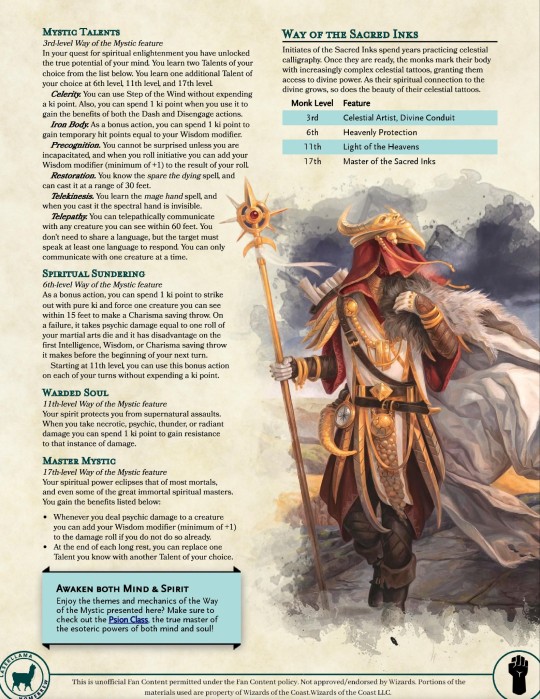

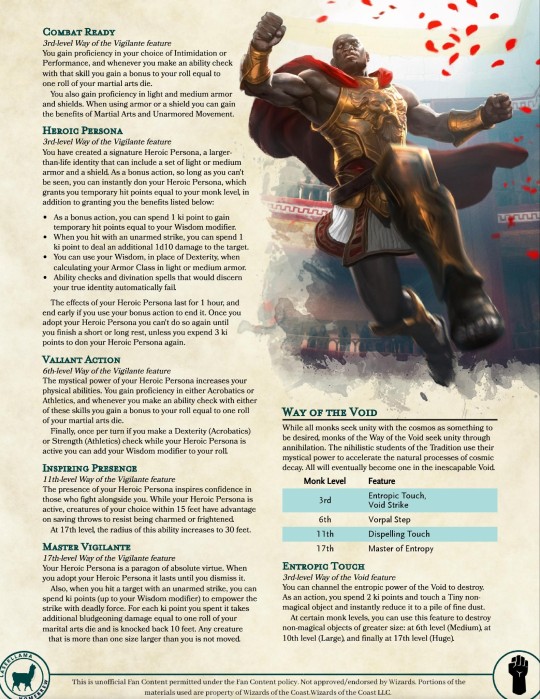
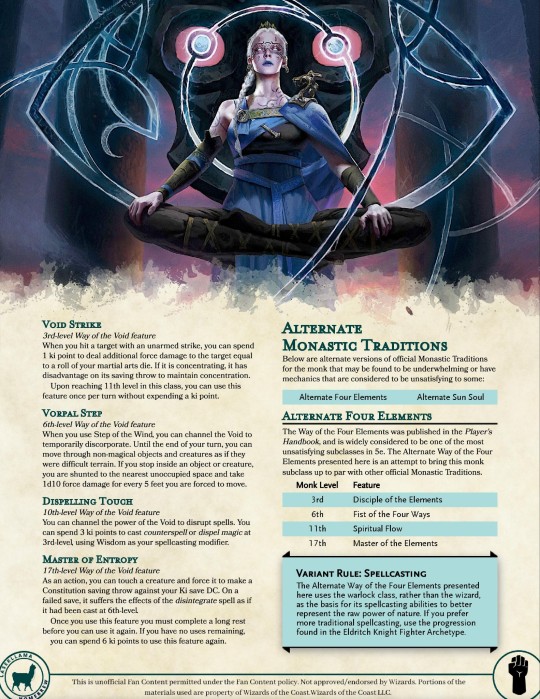
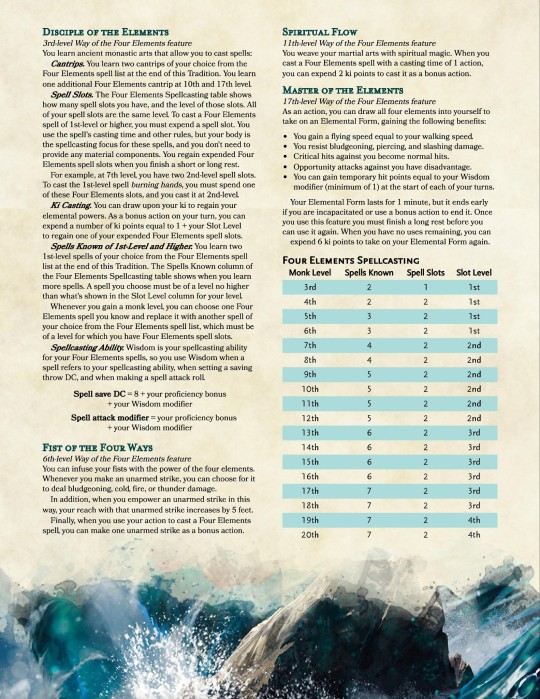
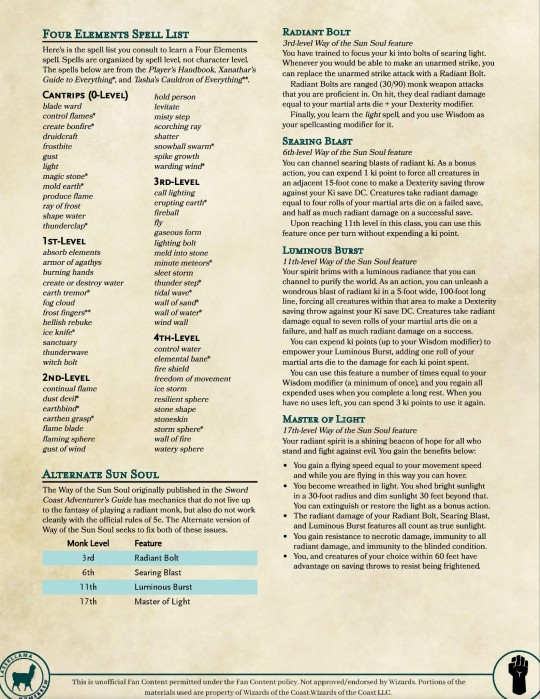


#laser llama#monastic#traditions#monkish#monks#monk#way#ways#expansion#expanded#revised#revision#updated#elements#elemental#class#classes
3 notes
·
View notes
Text

Once Little Soldier and Phoenix went belly up in 1981, Lou Zocchi’s Gamescience bought the “Book of” series. I believe either dead stock or reprints of Monsters and Demons came out with Gamescience branding. Later, all six were collected in this, The Fantasy Gamer’s Compendium (1983).
I have seen the digest versions of three of these in the wild (for frankly bonkers prices): Book of Shamans, Book of Treasure and Book of Sorcery. Shamans is a whole new class, complete with a custom spell list, that is framed around accessing the spirit world in a way that reflects I guess broad assumptions about tribal magical systems. Its OK! Treasure is what you’d expect, a collection of magic items pulled from myth and legend in the first part and from genre fiction in the second. It is pretty good! Sorcery is an interesting, if slightly unwieldy reconfiguration of the magic user class, explicitly arranged around demonology and pulp notions of Western occult traditions. Basically, it’s intended to provide mechanics that allow a class to summon all the folks listed out in Book of Demons. It also has a collection of occult-themed magic items, like the Hand of Glory, that I find delightful. That’s probably the most useful thing for me, personally, in the whole “Book of” series.
The last Book collected here is the Book of Mystery, which I am not sure ever saw print as a standalone Little Soldier product. It presents a new class (Lord of Mystery), the new skill system those characters use, and an organization they belong to, which safeguards high science for a time when humanity is ready for it (the Lords of Mystery are descended from the original humans, who crashed here [wherever that is] in a colony ship millennia ago). Many of the classes skills are trained and require quests. They seem to get access to a lot of abilities. It seems like a pain in the butt, but an interesting one, almost like a more monastic version of Dave Hargrave’s Techno class from Arduin.
#tabletop rpg#roleplaying game#dungeons & dragons#rpg#d&d#ttrpg#Game Science#Fantasy Gamer Compendium
71 notes
·
View notes